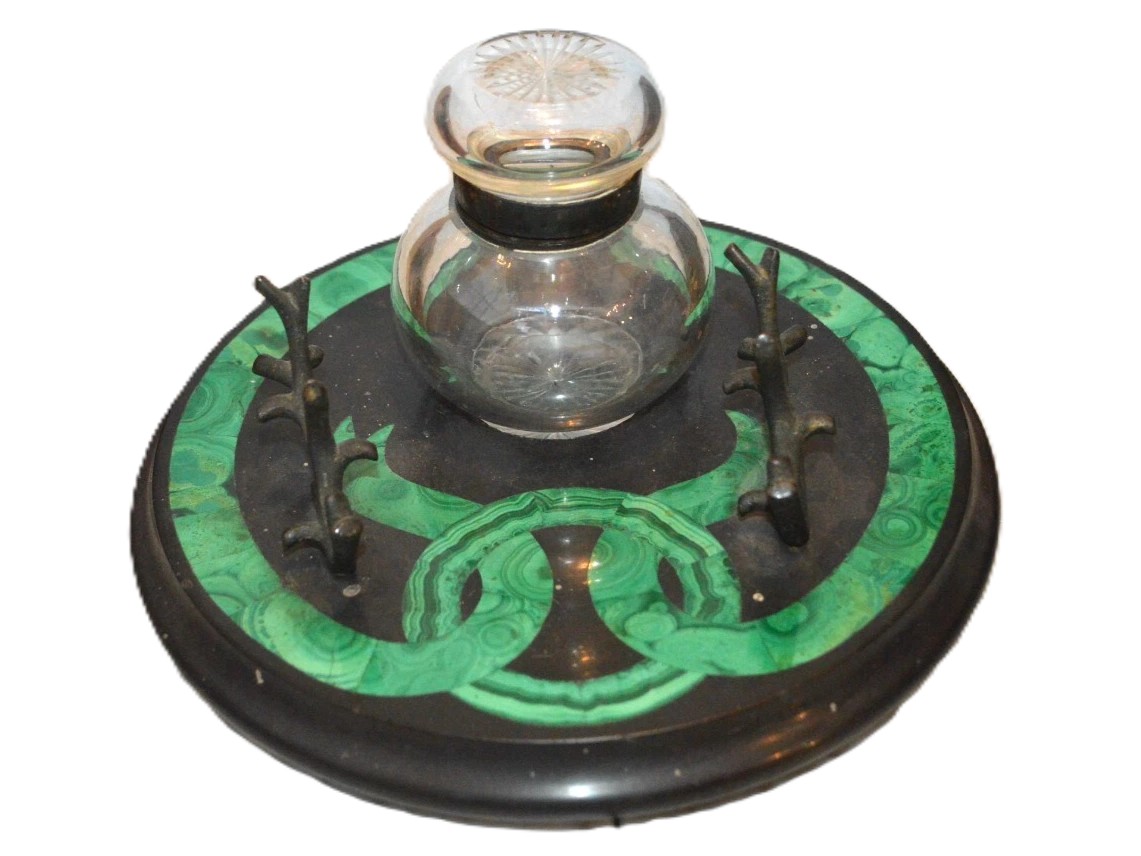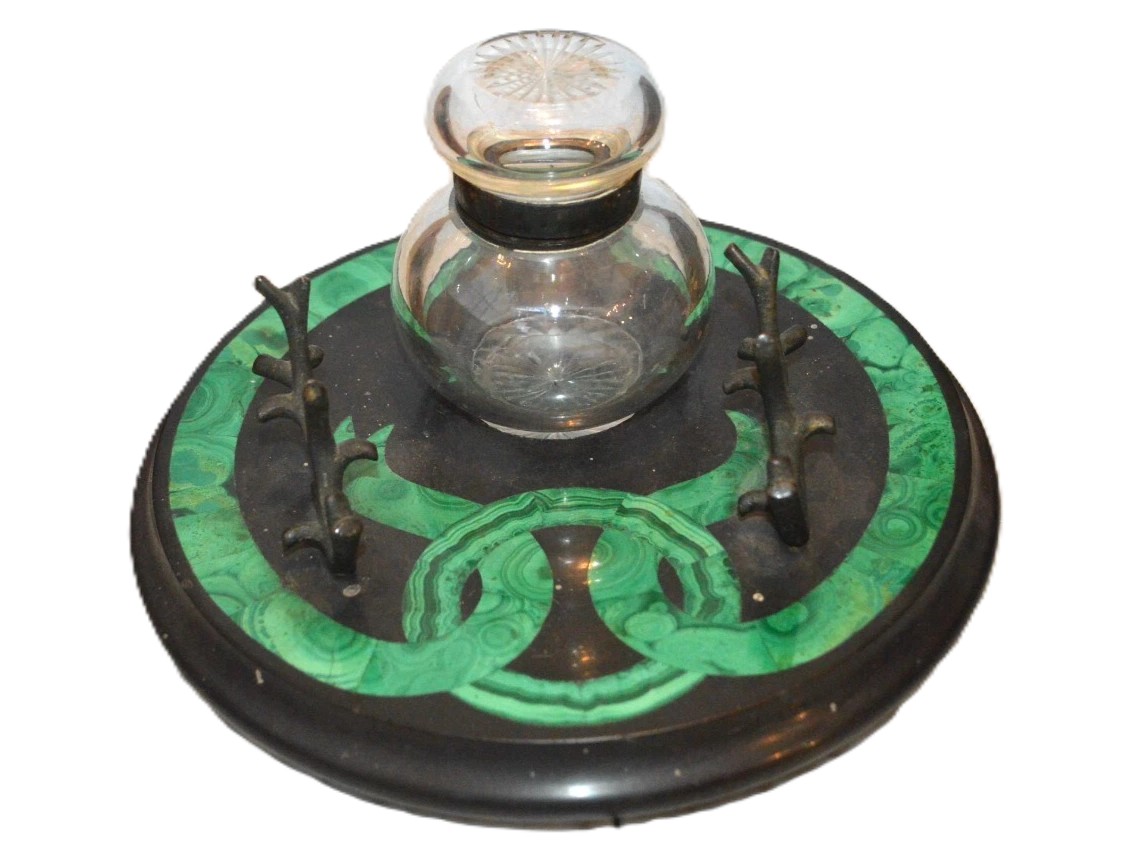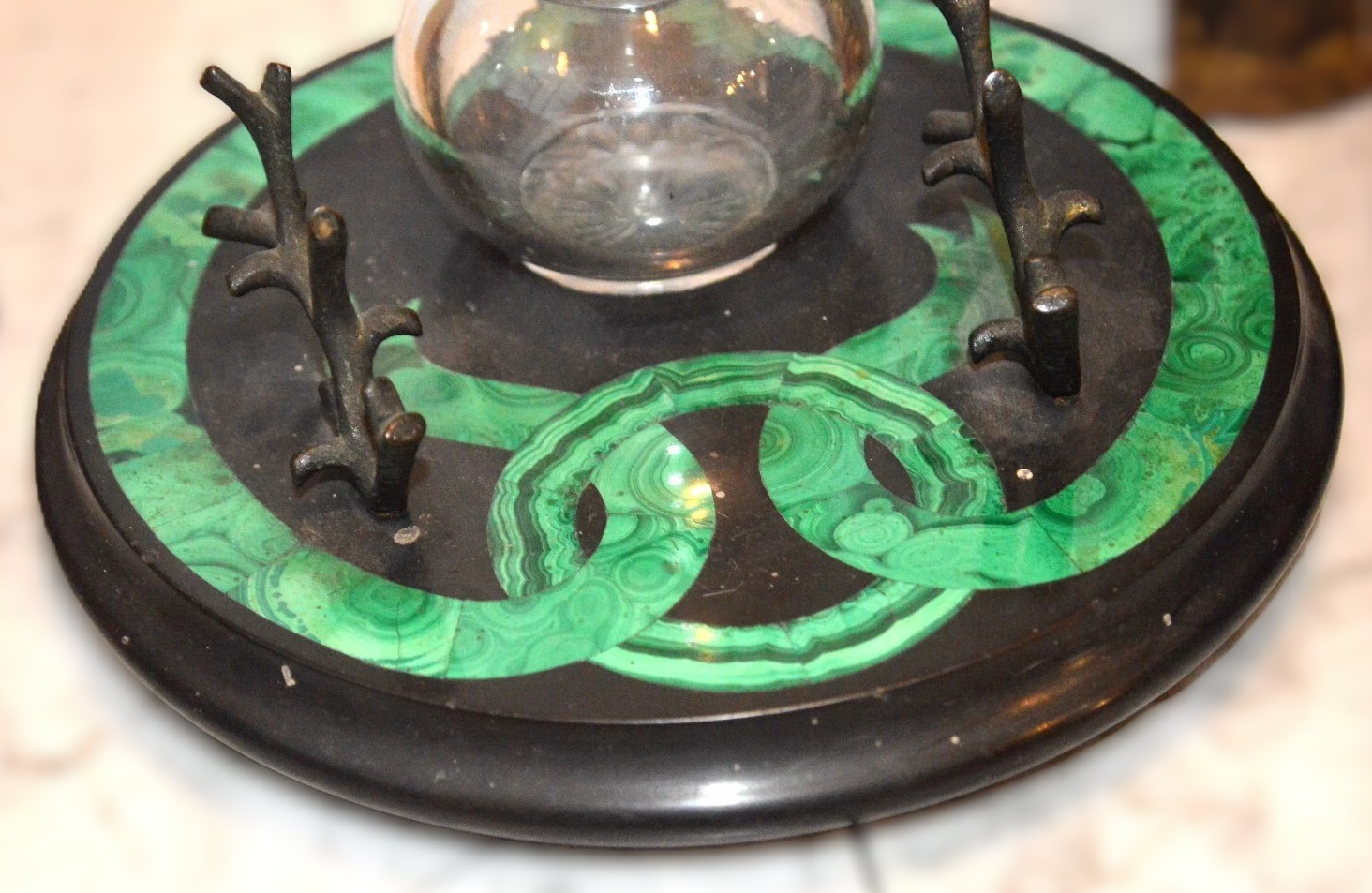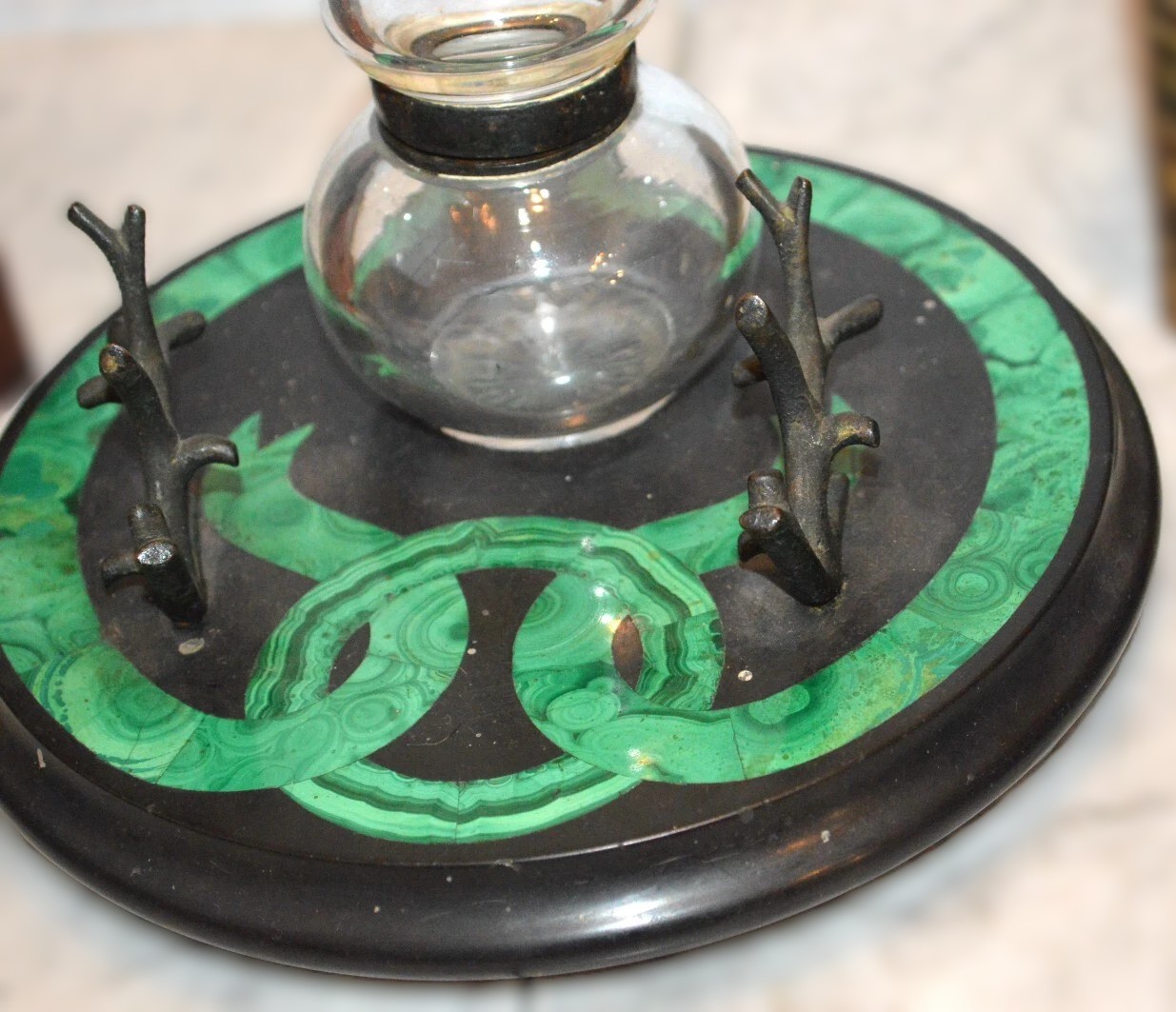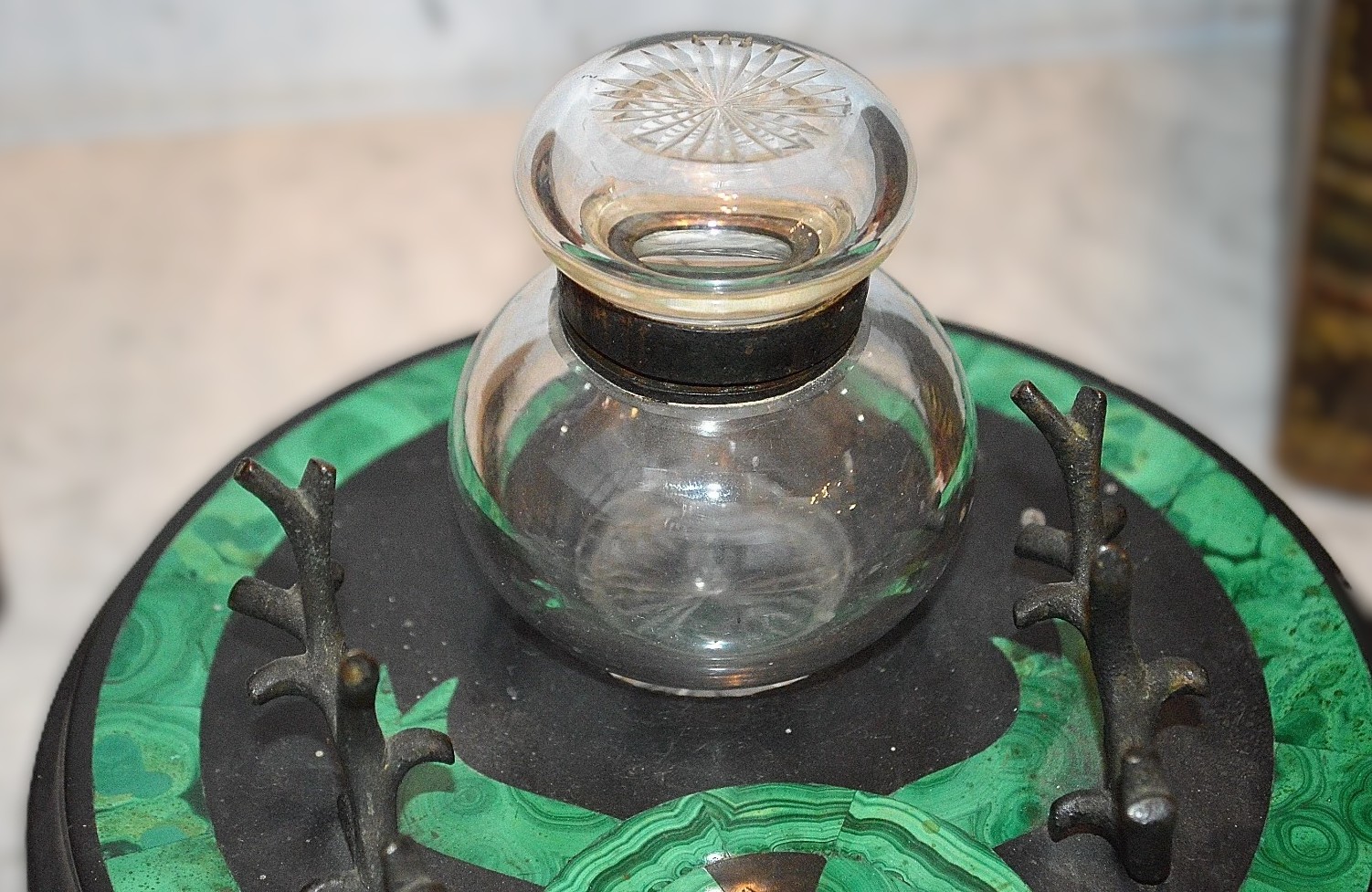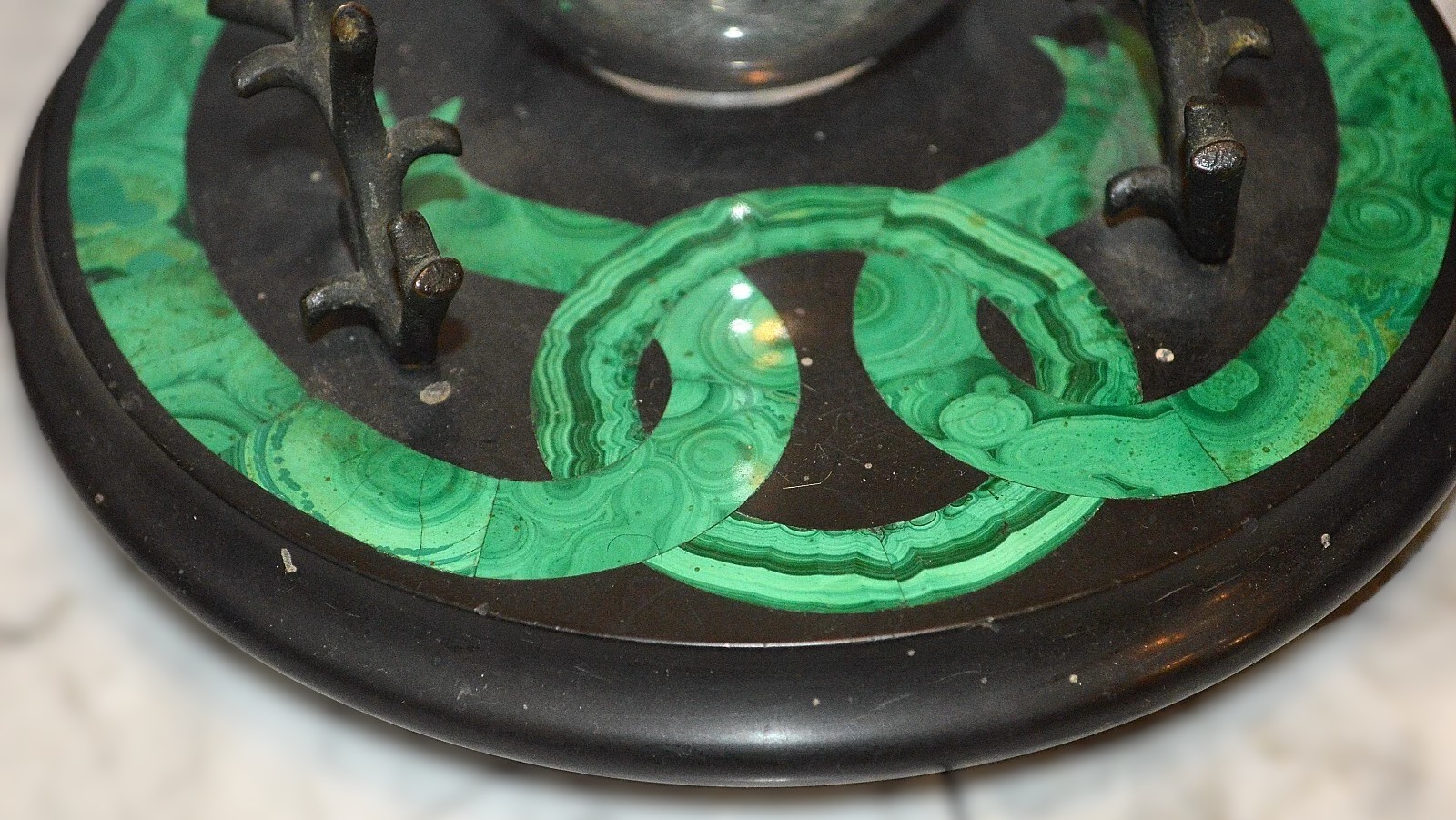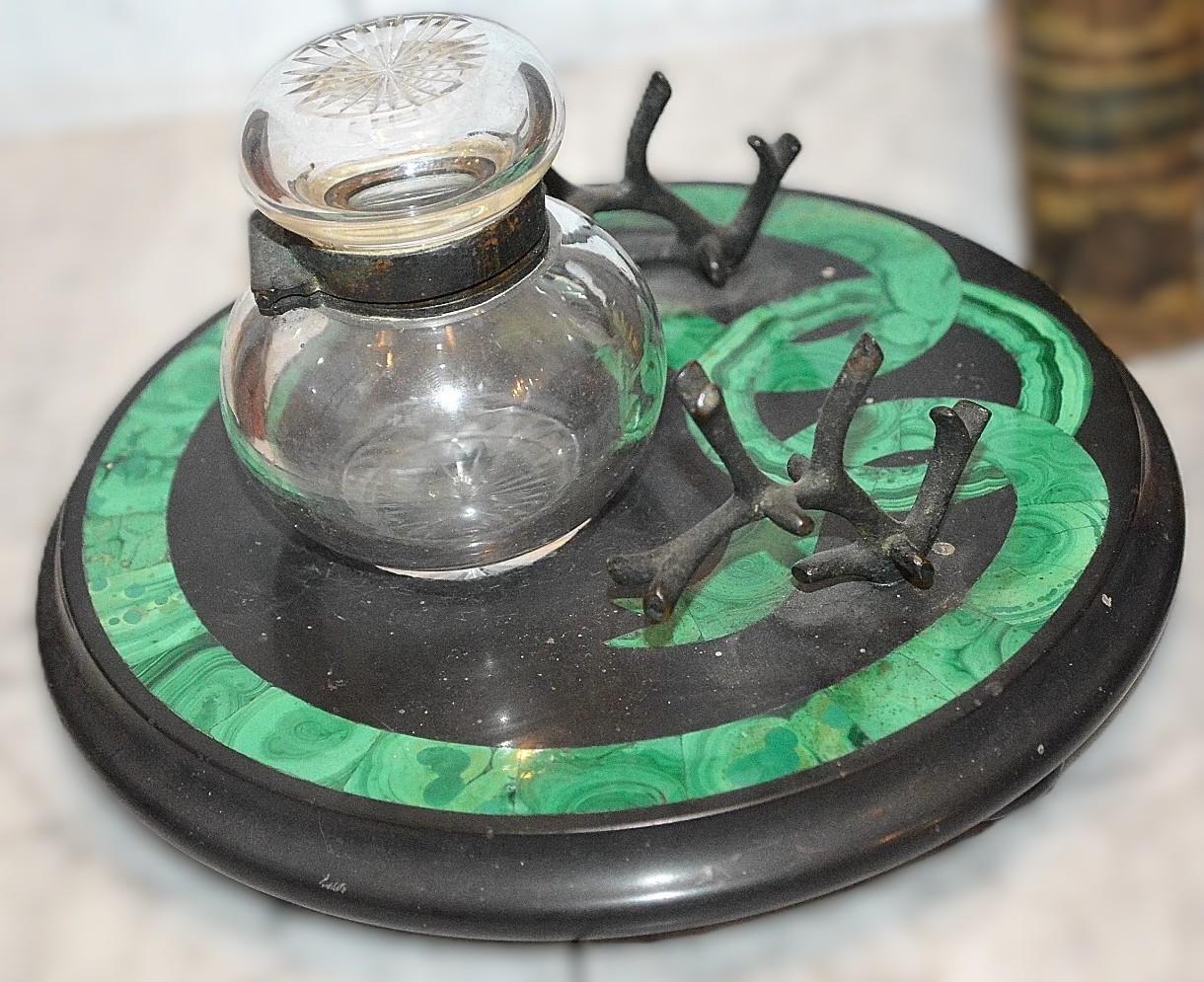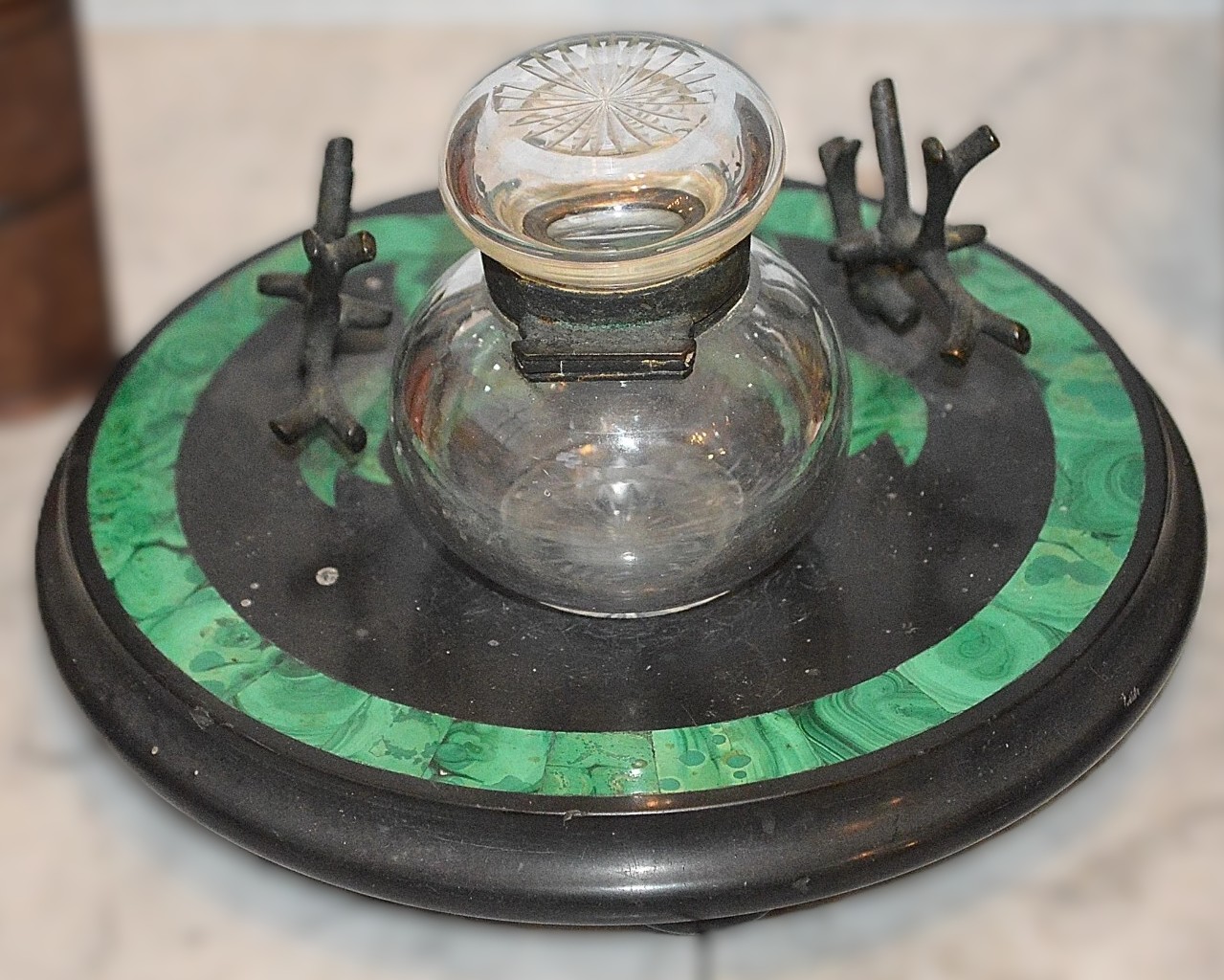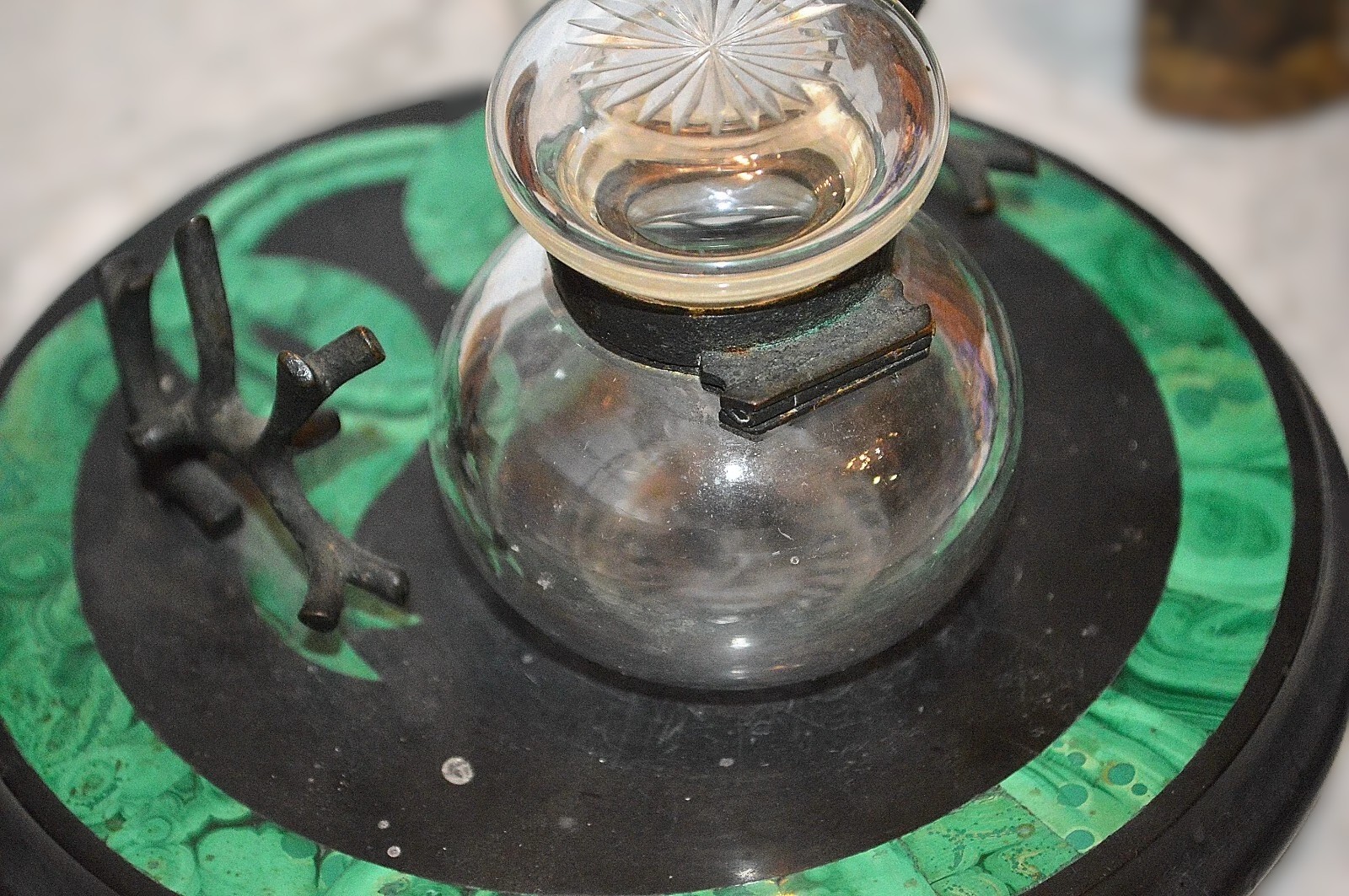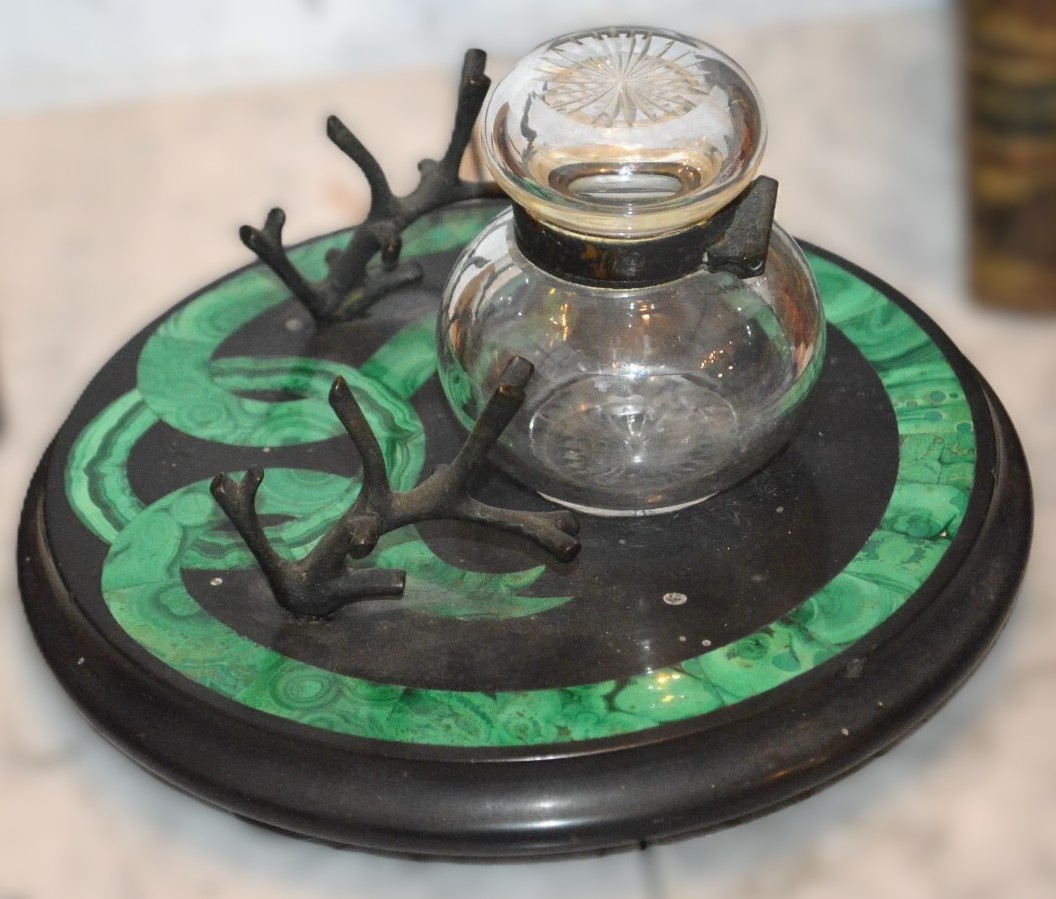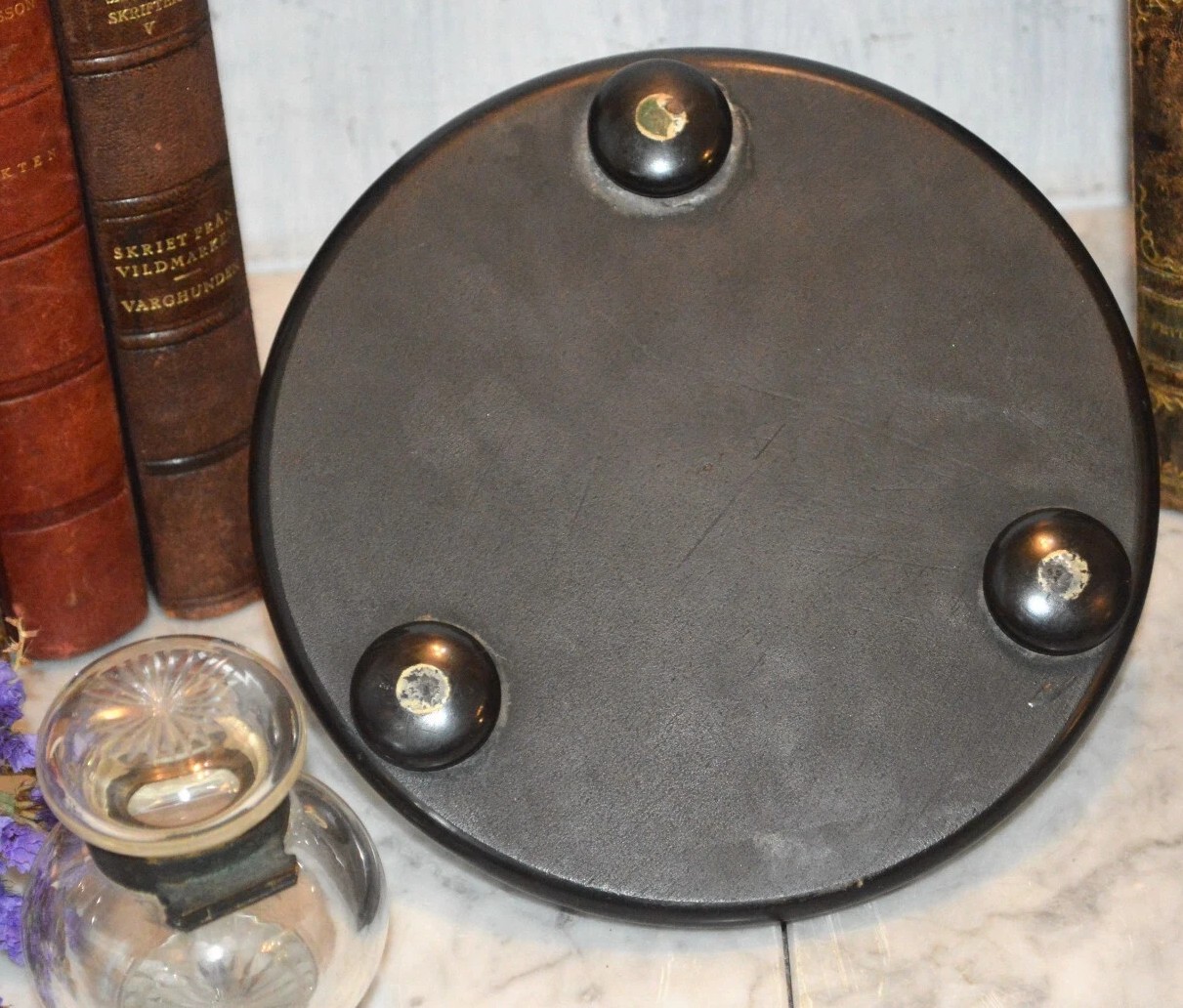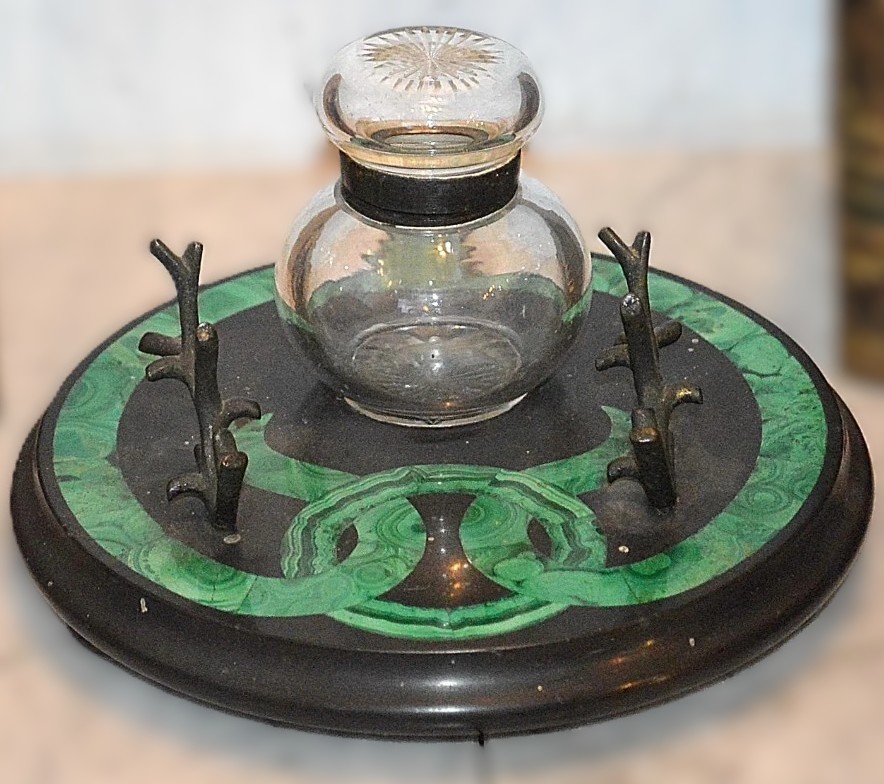
Marble and Malachite Inkstand
| Categories | Stone/Marble/Ivory/Bone/Hoof/Leather |
| Material | Malachite, Marble |
| Markings | Unmarked |
| Manufacturer | Undetermined |
| Origin | Undetermined |
| Date or Era | circa 1880 |
| Measuring | 7” diameter |
This inkstand made of polished dark marble features intricate inlays of malachite, a vibrant green mineral known for its distinctive concentric banding. A single, central glass inkwell sits within the marble. On either side of the inkwell are two metal pieces, sculpted in the shape of branches or vines. These serve as holders to rest pens.
The swirling, serpentine feel of the malachite, combined with the “ribbon through a circle” motif, is a design element fashionable during the 19th century. This was a time when European art was heavily influenced by a renewed interest in Eastern cultures, particularly those from Japan and China. The elegant simplicity and flowing lines of many Eastern designs were highly appealing to Western artists.
The Meaning and Origin of the Design
The “ribbon through a circle” is a form of interlaced knotwork, a motif found in art across many different cultures, including Celtic, Islamic, and Asian traditions.
- In Asia, a flowing ribbon or knot often symbolizes eternity, prosperity, or interconnectedness.
- In Western art, similar knot designs represent concepts like a “love knot” or an eternal, unbreakable bond.
Given the 19th-century European context of this inkstand, the design likely represents a beautiful fusion of these influences. The artist likely chose this elegant and sophisticated pattern for its universal meaning of eternity, unity, or connection. The dynamic “serpentine” quality of the malachite makes the design feel fluid and natural, complementing the symbolism of an eternal, flowing ribbon.
Style and Origin
This inkstand is a prime example of the 19th-century Grand Tour style, which was a popular trend that saw wealthy travelers collecting decorative items and souvenirs that referenced classical design and exotic materials. The combination of dark, polished marble with vibrant malachite inlays was a hallmark of luxury goods from this era, particularly those made in Italy and France. The craftsmanship and use of fine materials indicate that this was a high-quality piece made for a discerning client.
Sold for $450 in August 2025
Content disclaimer. The information posted is the owner’s best knowledge and may not have been vetted by the SOIC. We welcome comments, corrections, and additions, working to make our website information comprehensive and accurate.
Join the Society of Inkwell Collectors (SOIC) – it’s free!
Founded in 1981 as a non-profit organization,
we are documenting inkwells (and accessories).
We’re here to help and inform!
